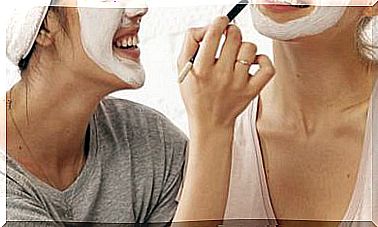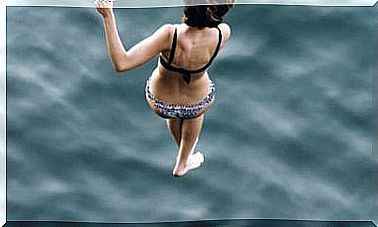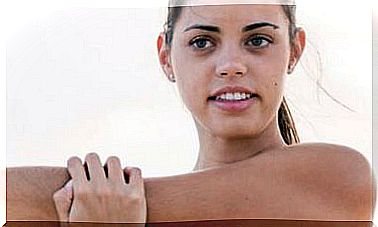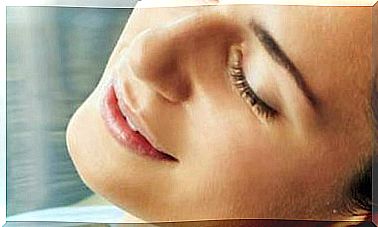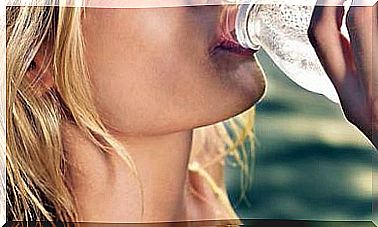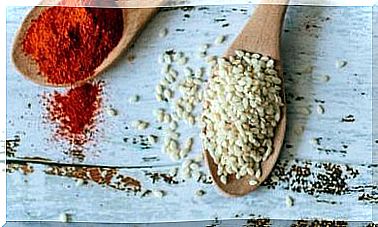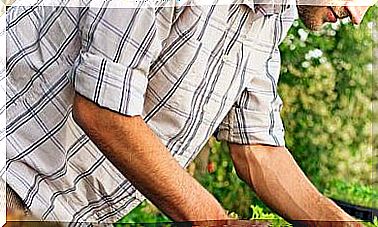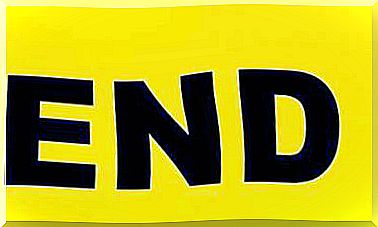“A Rigid Body Is A Rigid Mind”
It is not natural that you exercise for an hour a day, but that you integrate movement into your life, says Katy Bowman. It is part of the DNA of our species.
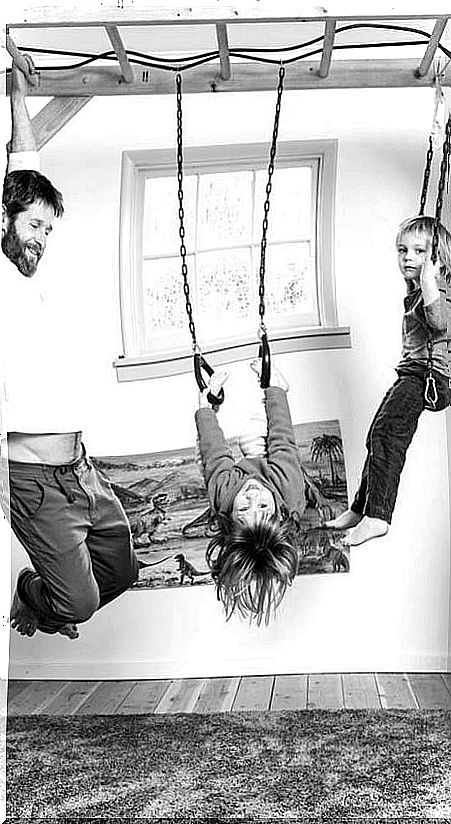
The American Katy Bowman is 42 years old, lives in California and as a specialist in biomechanics she has been researching for some time how the lack of natural movements influences our health. They are movements that we have eliminated from our lives for comfort and technology. His knowledge has been reflected in the book Move your DNA (Sirio, 2018), which is in its second edition.
Katy remembers that as a young woman she spent long hours sitting studying. His life was very sedentary, until he decided to start walking eight kilometers a day, and he continued like that for a long time, since he discovered that it really suited him.
Since then, he has been alternating times of great movement with other calmer ones dedicated to raising his children and writing books such as the one mentioned or his well-known Goodbye to the chair (Sirio, 2018).
Nowadays, she tries to do everything by hand: grinding her coffee in the morning, working in her garden and in her garden, taking care of her animals, leaving her car parked and walking everywhere she can, carrying things with her arms … His appearance, brimming with vitality, reflects this active family way of life.
Recover the movements of your ancestors
I meet Katy Bowman in a central hotel in Barcelona and I see her arrive to the appointment walking. With an athletic build and temperate demeanor, she confesses to me after a while that the day before she was in Montserrat, the magical Catalan mountain, with her husband and children, and that they walked 12 km with loaded backpacks.
His idea is to have a life rich in movement, as the first inhabitants of the planet did, and free us from exercising in a gym. Exercise, he explains, are vitamins, but a life rich in movement is a good diet. The interview promises.
“How does lack of movement influence our DNA?”
—DNA can be expressed in different ways depending on how external factors influence cells. As movement is one of them, the way we move influences – for better or for worse – the form our organism takes. Movement, like food, creates a cascade of biochemical processes that alter our physiological state. When we move our arms, legs, torso and head we are not only exercising the limbs, vertebrae or muscles, we are also modifying the tiny and invisible cellular structures.
– What can happen at the cellular level if I spend many hours sitting?
—In the last ten thousand years, most of humanity has gone from living in hunter-gatherer populations, in which survival depended on hunting, gathering, building huts, carrying children… –that is, on constant movement – to live in farming communities, later in industrialized nations, and finally in technology-based society.
—Yes, the movement is being eliminated in our time …
—Regular office work forces us to sit for a long time and our sedentary lifestyles are now associated with greater calcification of the coronary artery, for example, which is one of the first indicators of heart disease, but there are also other diseases such as diabetes and certain cancers that are related to lack of movement.
As we move we exercise the body and also modify its tiny cellular structures.
“He says that lack of movement is almost as dangerous as having bad eating habits …
—Each and every one of the functions that our body performs requires some type of movement, which has its origin in the musculoskeletal system, to be carried out with ease and ease: digestion, immunity, reproduction … So You can eat the perfect diet, sleep eight hours a day, or use just baking soda and vinegar to clean the house, but all of these efforts will be thwarted at the cellular level without the burdens that natural movement brings. By this I mean that food nourishes us, and leading a good life is perfect, but exercising the body is essential and many times we are undernourished of movement.
“We alleviate it by going to the gym or going out in nature on the weekends.” It’s enough?
—It is important to exercise, but this takes only a very small part of the time and, furthermore, if you want to do it outside of work hours, it implies leaving your family, looking for a babysitter for the children… This solution does not work for many people. We need to learn to move in our daily lives.
“How should we move to be healthy?”
—Natural movement is what humans have made for thousands of years and what has allowed us to evolve. All the movements that would help us survive in a natural environment: walking long distances through uneven, uneven terrain, carrying small weights on our arms, squatting, picking up things from the ground like when we work in a garden …
—And if I spend a good part of the day in front of the computer, how can I apply this natural movement?
—First, instead of looking at the most difficult part to change, which is work, you have to see what can be done before and after work to activate the body. I, for example, made a number of changes at home. I put furniture at different heights. I removed the sofa and placed cushions that allowed me to sit and in different positions and have things at hand in a certain way. I began to work more actively in the garden and made a vegetable garden, with which I carried out small loads and strengthened my muscles … I decided not to take the car to go anywhere that was less than 2 km away, I got used to not taking the elevator no longer sit in chairs. I also realized that it was important to wear completely flat shoes so that I could move my ankles better.
“Is standing healthy?”
-It’s not enough. There are people doing jobs that force them to be on their feet all day and that causes injuries. It’s not about that. It is rather that if you are in an office, instead of a tall desk, you can use a dynamic one. For example, a piece of furniture at different heights that allows you to move and bend over, but with which you can continue in your workplace without problem. There are already offices of this type and little by little this idea is entering schools as well.
Your workplace doesn’t always have to be a table.
-In schools?
—In Germany it begins to be seen. The change comes from teachers who become aware and apply what they have learned.
—Sitting for many hours in a chair, how does it influence us?
“It’s not just hours.” We’ve been around for years, so people don’t have the strength in their legs or buttocks to bend down and stand up. Now the ease of bending over and standing up is used as a measure of longevity. In addition, bones, muscles, and the circulatory system are fed when we move. If we don’t move we have a problem.
– Are there movements capable of helping us in times of great stress at work?
—Walk quietly through nearby green areas to calm yourself down. And when you are in the office, sit in a different way than usual, play with your alignment, change your posture … And also anything you have to do without sitting; for example, getting up to call someone from inside the office if you need to speak to them, rather than texting them or telling them in person.
—In your book you propose to practice some movements that we have quite forgotten to regain our personal freedom …
—Recovering movements such as squatting more often, spending time barefoot at home or walking barefoot through natural surroundings, hanging by the arms on a swing … Taking up those things we did in childhood helps us regain our freedom, our happiness and our lightness. It must also be borne in mind that a rigid body implies a rigid mind.
Walking barefoot or swapping out sofas for floor cushions are very effective little changes.
“When we walk, how can we know if we are aligned or not and if we walk well?”
– You have to check the range of motion: if the ankles move well, if the legs move well, the knees, the hips… The torso should move forward smoothly and with little rocking. If you carry a bag on one shoulder, this part of the body will be lower than the other, so it is good to alternate the weight on both shoulders. The ideal is to start with a good posture, adapt it to your walk and get fitter and stronger in general.
– What kind of exercise seems more complete: chikung, hiking in the mountains, yoga …?
—Exercise is like a meal, it needs variety. If you look at exercise as a category, you can see which areas of the body you exercise and which ones you don’t. If you do yoga and don’t walk, you can walk to yoga class and then walk back. If you do strength exercises but not stretches for flexibility, incorporate them. And if you don’t like to exercise, you go to the garden or orchard and move there. Exercising is not a natural activity, we are the first humans to do it.
—How do we have to educate children so that their movements are wide and their minds free?
—Children learn by watching their parents do things. We are their models. If you go upstairs, so do they, and if you’re going to do the shopping, let them carry part of the load. We must observe how many times we tell them to be still and not move. Do the festive celebrations outside the house to be able to move and then walk, walk as much as possible. Take advantage of the holidays to walk!
